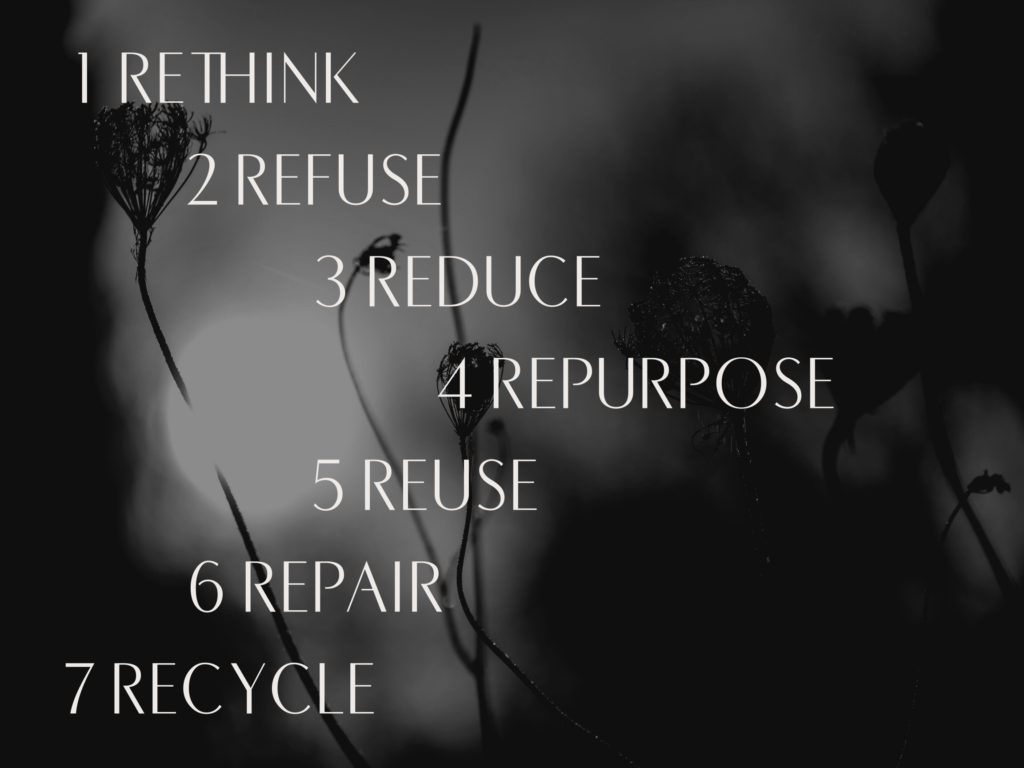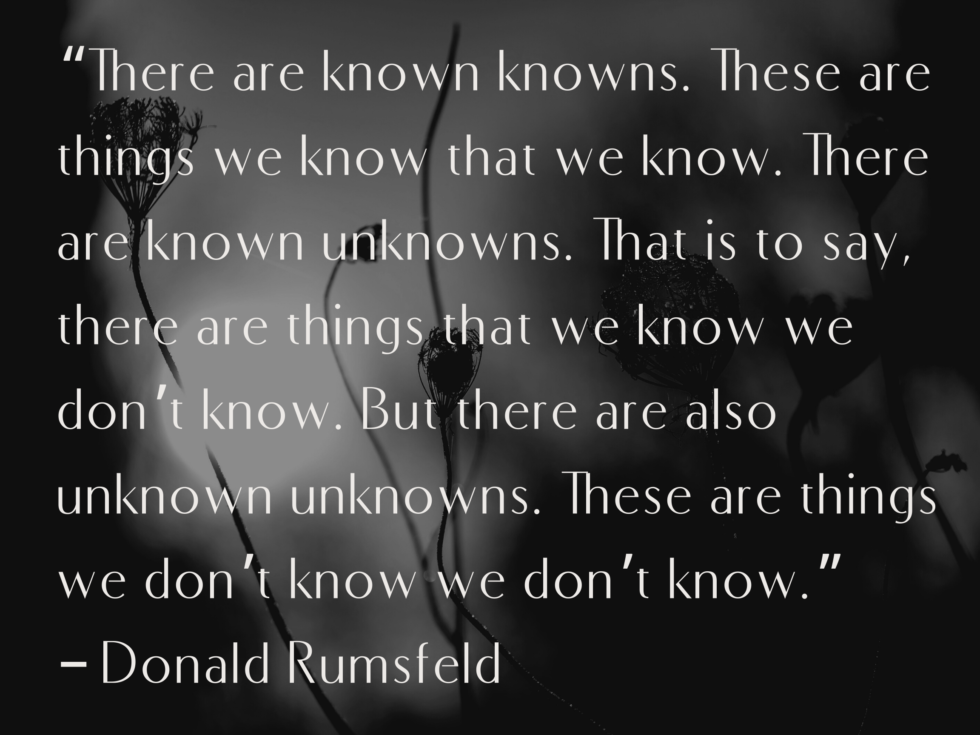Throwaway Culture is all around us, and the construction industry is no different. The hot talk these days is on sustainability, building green and passive design…but I believe the focus should be on the 7 Rs and how we can do things a different way. There are variations of the 7 Rs, but below are the 7 I’m choosing to refer to in this blog post.

I believe in most parts of the world, we already have enough buildings to provide safe housing for everyone and to meet all human needs…and then some. But we live in a culture of “more, more, more” so the new structures just continue to go up. I could go on forever about this, but instead I’m going to direct you to the amazing book, Rebuilding Earth. If you do read it, and love the message Teresa shares, please reach out as I’d love to hear your thoughts about how we can incorporate her 12 Principles of Conscious Construction into projects we are currently working on.
This post is intended to be a conversation starter. No one has all the answers, and that is why it is so important to start the conversation. When we share our ideas, we all have more…and I truly believe that our combined ideas can grow into something amazing!
The following 8 questions are actually ‘click to expand’ accordion items. So please ‘click to expand’ them. Tech is not (yet) my forte, but I’ll get there.
My background is environmental systems and my journey thus far has led me to the Building Code. Pair the two together, and my passion is to have the most environmentally friendly buildings possible.
At Kilo Lima, we are working on some pretty exciting things to tie environmental impact of products to building code compliance. Our goal is to have a database where architects and designers can see if products are meeting Building and Fire Codes for their specific building, but also their environmental impact. Gone will be the days of frustration looking at a product specification sheet and seeing ‘meets Building Code’ with no additional information for what application, tested to what standard and for what type of building. Sound like something you’d benefit from? Reach out. The more input we have the better this database will be!
On the home front, I recently moved back to Regina, Saskatchewan with my family and purchased a 100 year old home. Well, a 109 year old Eaton’s Catalogue home to be exact. It is full of character and quirks, and I love it. I have my fingers crossed it is not haunted.
There are a few things that I’m going to change around the house to meet my families needs. The goal with my updating is to complete all the work I have envisioned using only reused and repurposed materials. The first project is making a wall with old doors…wish me luck! If you’d like to follow along, connect with me, and share some suggestions…I’ll be documenting this journey though my instagram!
My aged abode also has some pretty hilarious Building Code compliance issues. The Building Code isn’t retroactively applied to existing buildings, but I’ll also be sharing some of the quirks through instagram and our Kilo Lima Code Community LinkedIN page. In the next month or so, we’ll also be bring “Code Compliance Wednesdays” to you, complete with challenges and incentives for all the Code geeks out there. Not every Wednesday though…Rome wasn’t built in a day!
I recently came across unbuilders, which is an amazing company that is taking ‘Rethink’, ‘Repurpose’, ‘Reuse’ and ‘Recycle’ to heart. They are a deconstruction and salvage company that unbuilds buildings that are slotted for demolition. Their slogan is ‘it’s not waste, it’s wasted’, and I couldn’t agree more. Check out their website, LinkedIN or Instagram to learn more.

Another industry leader, who I’ve mentioned many o’ times, is Teresa Coady. Her 12 Principles of Conscious Construction are a ‘revolutionary guide to rethinking our role as planet shapers in the digital age’. If you are reading this, you are most likely in the building industry. And if you are in the building industry, I can guarantee you will get some ideas from this book on how to do a little better when it comes to the 7 Rs. Her Principles are:
- Design for life, not machines.
- Protect all waters and wetlands, discharge nothing to the oceans.
- Restore and protect all forests; keep cities green.
- Re-store and protect eco-corridors, abandon the paved grid.
- Use solar first.
- Embrace distributed energy systems first.
- Limit man-made CO2 emissions, discharge no toxins or particulates to the atmosphere.
- Regulate EMFs; mandate EPDs; build only what is needed; design to human scale.
- Design for speech, music and dance; eliminate noise pollution; restore natural sounds.
- Restore natural connections.
- Measure happiness first.
- Balance financial, produced, human, social and natural capitals.
Efficiency Canada is the ‘National voice for an energy efficient economy’, and I’ve recently learned about some pretty great initiatives they have going on. They have an Online Energy Efficiency Training Database that is definitely worth a look!
My main concern with policy and initiatives at National levels is that all sounds great on paper, but rarely are actual tools and resources provided to those who need to carry out the work…the ‘boots on the ground’ if you will. As a country, we have huge issues where Building and Fire Codes are not even being met a lot of the time…so how are we going to make energy efficiency happen when we struggle to get compliance with Codes that have been around for decades? Well, I’m sure there’s some creative solutions out there. If you have any ideas, let us know!
Not entirely sure. I assume each Province is up to it’s own thing (I could go on about the inefficiencies of that, but I’ll leave it there!). If you have any resources please pass them along.
Again, each municipalities is likely leading their own initiatives. The City of Victoria recently made bylaw amendments to remove some ‘red tape’ to the deconstruction industry. Read an interesting article here that starts with ‘The City of Victoria is actively working to break down walls for an industry that literally breaks down walls’.
The possibilities are endless. Tell us about other groups who are actively working on ‘Rethinking’ the industry norm to move towards a better tomorrow. Pick up Rebuilding Earth to get your creative juices flowing. Share this post with everyone you know!
Now that you know there are better options…. go out and do better!
Beyond the Codes is a series where I write about the things that make me tick. Working with the Building Code is great and all, but it is really so much more important than what is currently codified. The Building Code evolves at a turtle’s pace, and my goal with this series is to start conversations on how as an industry we can do better. I’m of the opinion we don’t need to wait for the Codes to change to do better. And if there are enough of us who focus on doing better collectively, we can raise the industry standard…even if the Codes haven’t caught up!
Here is the series to date:
- Beyond the Codes: Black Lives Matter
- Beyond the Codes: Accessibility and Inclusivity
- Beyond the Codes: What’s Possible with Collaboration?
- Beyond the Codes: It Takes a Village
- Beyond the Codes: Indigenous History Month
If any of these posts resonate with you, please do what you can to keep the conversation going and please share with those around you who would benefit from hearing the message too!
A final two cents how I think the 7 Rs apply to the construction industry:
- Rethink. Our vision at Kilo Lima is to revolutionize the way Canada looks at development. We believe that with collaboration and innovation, we can find a new way to build our communities. As I’ve said before: “I can’t do it. You can’t do it. But we sure as heck can”.
- Refuse. Existing buildings are all around us. I absolutely get the allure of new. Heck, we built our last house in Regina, Saskatchewan new. And it was nice for a while…but then the new wore off as it always does. When looking for a home or commercial space, I encourage you to fight the allure of new, and see the charm in existing buildings and the era they are from.
- Reduce, Repurpose, and Reuse. Even after I convince the country to stop building new, renovations and alterations are always going to be needed. Can you look at your next project with a different lens and see how you can reduce, repurpose and reuse? Check out places like the Habitat for Humanity ReStore or local apps like Kijiji, UsedLocation or VarageSale to avoid buying brand new materials.
- Rot. I’m just starting my composting journey and don’t know much, but I’m not entirely sure construction waste can be composted. If you have ideas, let me know!
With this post, I’m hoping I was able to move you from the ‘unknown unknown’ to ‘known unknown’. And that’s where you can start asking questions, even though you don’t have the answers. And when enough questions start getting asked, things can start to change. And that, my friends, is how we change the industry!




